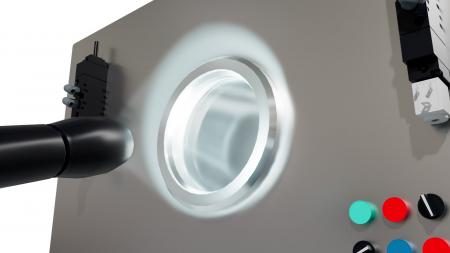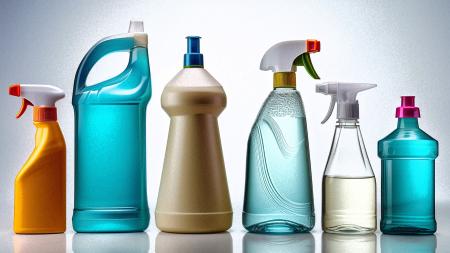This article will discuss:
- Cleanliness validation in the food industry
- Criteria for cleanliness validation
- The success of the cleaning program
The experts at Dinnissen Process Technology are available to answer all your questions:
Request a consultation Get in touch with Juul Jenneskens 077 467 3555
Cleaning validation in the food industry
Cleaning validation is to prove that the equipment is consistently stripped of previous products or cleaning agents to an acceptable level. This is important to avoid possible risk of cross-contamination between products.
Cleaning validation can be applied to any type of cleaning by food processing equipment manufacturers, engineering firms, food manufacturers, and service and chemical suppliers.
Machine manufacturers in the European Union must provide cleaning instructions that specify recommended methods for cleaning, disinfection and rinsing with associated chemicals. This applies to easily accessible areas, but also areas where access is impossible or advisable. The machine manufacturer initially provides general guidelines, because he does not always know the specific use of the installation by the food manufacturer. The food manufacturer is responsible for validating his own cleaning process procedure as he will usually apply this.
There are 2 basic ways of cleaning validation, based on evidence obtained through testing and based on analysis and historical data, also referred to as retrospective validation. If possible, validation by testing is preferred. Retrospective validation is preferred not to be used and is no longer applicable if the production of safe food fails. Validation can also include challenge or worst case testing. These determine the robustness of the cleaning process. If possible, it is recommended to validate the entire processing line.
There must be SOPs (Standard Operating Procedure) that specify exactly how the cleaning process, sampling and analysis methods should be carried out. All procedures described here must be validated.
At least three consecutive uses of the cleaning procedure must be performed and demonstrably successful in order to prove that the method has been validated.
In order to perform validation tasks on time, there must be a suitable system: organizational structure, documentation infrastructure, sufficient personnel and financial resources. Management and personnel responsible for the quality assurance policy must be involved in this. Personnel with the appropriate qualifications and experience are responsible for performing the cleaning validation. If the cleaning activities are outsourced, the operator's personnel must be involved in the validation process.
Before starting the cleaning procedure, it must be established:
Cleaning frequency and non-production times,
- Water quality,
- Cleaning and disinfecting agents,
- Parameters for cleaning process and their registration,
- Responsibilities and qualifications of persons involved,
- Monitoring of the cleaning process incl. Calibration of sensors.
The validation of cleaning and / or disinfection procedures ensures documented evidence that an approved cleaning procedure provides clean equipment for its intended use. The cleaning validation must be described in the cleaning validation protocol that must be formally approved. This protocol covers in detail the entire validation process, summarizes all considerations made, and allows verification that all requirements have been met.

Cleaning validation

Cleaning agents
The principle behind the tap density tester is the Hausner ratio. It is based on the idea that highly cohesive powders also exhibit strong interparticle attraction. These forces help counteract gravity, allowing particles to support themselves around empty spaces.
Criteria for cleaning validation
Surfaces within the scope of cleaning validation are surfaces that are intentionally or unintentionally exposed to the product. In addition, it concerns surfaces from which product splashes, condensate, liquids or material can drain, fall, spread in the product or end up on product contact surfaces or surfaces that come into contact with packaging materials.
Qualification:
- Documenting that the specifications set by the food manufacturer have been achieved by the machine manufacturer, with respect to legal requirements and EHEDG documents No. 8, 10, 13, 14, 16, 17, 20, 21, 25, 30, 32, 37, 42 , 43, 44.
- Verify that cleaning agents themselves or through reactivity with food components do not harm personnel, end-user or equipment when used as intended.
- The chemical properties of the water supply must be known, in particular with regard to hardness or other relevant parameters. The microbiological load of water must be adapted to the required degree of cleanliness.
- If process air is actively used during the cleaning process, a hazard assessment must be performed to determine the required quality.
Hazards Assessment:
- document the a priori evaluation of factors that may influence cleaning results.
Acceptance criteria:
- document the cleanliness criteria to be achieved for the process in relation to the specifications of the end product and criteria based on the HACCP plan.
Residual contamination:
- is not always a reliable indication of proper cleaning and may be the result of an inadequate sampling or analysis method
In general, the legal criteria are sufficient.
The success of the cleaning program
The main criteria for the success of the cleaning program are visual cleanliness and the absence of odors and biofilms. Sampling methods:
Direct sampling: sampling techniques with swabs and contact plates (ISO 18593). Because this type of sampling is difficult to reproduce, the operator must be carefully trained.
Indirect samples: to take samples of large areas, or areas that are inaccessible or not routinely dismountable and provide an overall picture.
Analytical methods used must be specific to the substance or the class of the analyte. The method must be validated. The detection limit and quantification must be known. These must be sufficiently sensitive to detect the established acceptable level of residue or contamination in relation to the material, contamination and sampling method. The specificity, sensitivity and reproducibility of the analytical methods must be known.
The pollution procedure consists of documenting the worst case situation with regard to pollution, or the grouping of the contaminated scenarios to be investigated
Revalidation should be performed periodically to assess changes in process and equipment (e.g. aging, failure) that may occur over time.

Name: Juul Jenneskens
Advisor
Please feel free to contact me if you have any questions about this subject. My team of colleagues and I are ready to answer!
Get in touch with Juul Jenneskens 077 467 3555 powtech@dinnissen.nl
Do you prefer to request a consultation directly? Request a consultation
